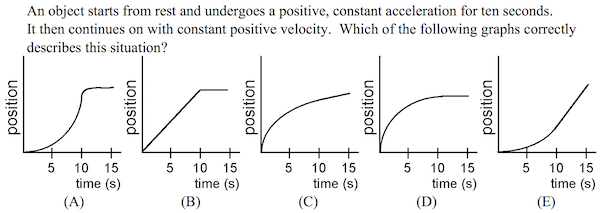Developed by Larry Dukerich and Bob Beichner
| Purpose | To assess high school students’ ability to interpret kinematics graphs. |
|---|---|
| Format | Pre/post, Multiple-choice |
| Duration | 45 min |
| Focus | Mechanics Content knowledge (kinematics, graphing) |
| Level | High school |
Sample questions from the TUG-K2:


more details
This is the lowest level of research validation, corresponding to at least one of the validation categories below.
Research Validation Summary
Based on Research Into:
- Student thinking
Studied Using:
- Student interviews
- Expert review
- Appropriate statistical analysis
Research Conducted:
- At multiple institutions
- By multiple research groups
- Peer-reviewed publication
There is no research on the TUG-K2. See the TUG-K page for an overview of research on the TUG-K.
PhysPort provides translations of assessments as a service to our users, but does not endorse the accuracy or validity of translations. Assessments validated for one language and culture may not be valid for other languages and cultures.
| Language | Translator(s) | |
|---|---|---|
| Swedish | Simon Moberg |  |
If you know of a translation that we don't have yet, or if you would like to translate this assessment, please contact us!
| Typical Results |
|---|
There is no research on typical scores on the TUG-K2. See the TUG-K page for typical scores on the TUG-K. |
The TUG-K2 is a variant of the TUG-K designed specifically for use in high school classrooms. The major difference is that the TUG-K2 de-emphasizes problems involving changing accelerations, which is rarely discussed in a high school setting. There are also a few completely new questions more appropriate for a high school level, such as one dealing with instantaneous velocity. Otherwise, there are a few minor differences, such as reporting numbers without scientific notation or simplifying the wording of questions (e.g., changing "What was the acceleration at t = 90 s?" to "What was the acceleration at the 90 s mark?"). Larry Dukerich, a high school teacher, modified the TUG-K2 from the original TUG-K in 1994, with the approval of Bob Beichner, the developer of the TUG-K.
Variation
|
|
Test of Understanding Graphs in KinematicsContent knowledge Mechanics (kinematics, graphing)Intro college, High school Pre/post, Multiple-choice |



